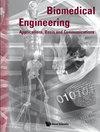传统分类与深度学习在肺癌预测中的比较分析
IF 0.6
Q4 ENGINEERING, BIOMEDICAL
Biomedical Engineering: Applications, Basis and Communications
Pub Date : 2022-12-10
DOI:10.4015/s101623722250048x
引用次数: 0
摘要
癌症是一种可怕的疾病。在诊断时需要额外的护理。为了帮助识别过程,医学成像通过产生身体内部器官的图像来更好地诊断癌症,起着至关重要的作用。医学图像通常被放射科医生、工程师和临床医生用来发现单个患者或群体的内部体质。大多数医生倾向于使用计算机断层扫描(CT)图像进行癌症的初步筛查,主要是肺癌。为了对肺癌进行更深入的了解和分类,在图像分类中采用了多种机器学习技术。不同算法对CT图像的分类已经做了很多研究工作,但都没有达到100%的准确率。通过应用支持向量机(Support Vector Machine)、人工神经网络(ANN)等深度学习系统和卷积神经网络(CNN)等方法,可以构建一个计算机化的真实分类系统。这些模型是作为一种分类系统建立的,它可以识别肺中存在的结节是良性的、恶性的还是正常的,是良性的还是正常的。本研究使用了伊拉克国家癌症疾病中心(IQ-OTHNCCD)的肺癌数据集和伊朗医院的CT图像。支持向量机,人工神经网络和提出的CNN分类技术应用于考虑的数据集。本研究工作提出了一种CT图像分类模型,在考虑的数据集上具有很好的精度。本文章由计算机程序翻译,如有差异,请以英文原文为准。
COMPARATIVE ANALYSIS OF TRADITIONAL CLASSIFICATION AND DEEP LEARNING IN LUNG CANCER PREDICTION
The cancer is an intimidating illness. Extra care is necessary while making a diagnosis. To aid the identification process, medical imaging plays a crucial role by producing images of the internal organs of the body for better diagnosis of cancer. Medical images are typically utilized by radiologists, engineers, and clinicians to spot the inner constitution of either individual patients or group of individuals. Most doctors prefer computed tomography (CT) images for initial screening of cancer — mainly lung cancer. To achieve deeper understanding and categorization of lung cancer, diverse machine learning techniques are employed in image classification. Many research works have been done on the classification of CT images with different algorithms, but they failed to reach 100% accuracy. By applying methods like Support Vector Machine, deep learning system like artificial neural network (ANN) and proposed convolution neural network (CNN), a computerized system can be built for truthful classification. The models are built as a classification system that can identify the nodule, if present in the lungs, as benign, malignant or normal or as benign or normal. Lung cancer datasets at Iraq National Center aimed at Cancer Diseases (IQ-OTHNCCD) and Iran Hospital-based CT images are used in this research. SVM, ANN, and proposed CNN classification techniques are applied to the datasets considered. This research work, proposes a model for classification of CT images with very promising accuracy on the datasets considered.
求助全文
通过发布文献求助,成功后即可免费获取论文全文。
去求助
来源期刊

Biomedical Engineering: Applications, Basis and Communications
Biochemistry, Genetics and Molecular Biology-Biophysics
CiteScore
1.50
自引率
11.10%
发文量
36
审稿时长
4 months
期刊介绍:
Biomedical Engineering: Applications, Basis and Communications is an international, interdisciplinary journal aiming at publishing up-to-date contributions on original clinical and basic research in the biomedical engineering. Research of biomedical engineering has grown tremendously in the past few decades. Meanwhile, several outstanding journals in the field have emerged, with different emphases and objectives. We hope this journal will serve as a new forum for both scientists and clinicians to share their ideas and the results of their studies.
Biomedical Engineering: Applications, Basis and Communications explores all facets of biomedical engineering, with emphasis on both the clinical and scientific aspects of the study. It covers the fields of bioelectronics, biomaterials, biomechanics, bioinformatics, nano-biological sciences and clinical engineering. The journal fulfils this aim by publishing regular research / clinical articles, short communications, technical notes and review papers. Papers from both basic research and clinical investigations will be considered.
 求助内容:
求助内容: 应助结果提醒方式:
应助结果提醒方式:


